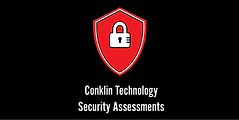
Cybersecurity Program Maturity Assessments
Cybersecurity refers to the body of technologies, processes, and practices designed to protect networks, devices, programs, and data from attack, damage, or unauthorized access. Implementing effective cybersecurity measures is particularly challenging today because there are more devices than people, and attackers are becoming more innovative. A successful cybersecurity approach has multiple layers of protection spread across the computers, networks, programs, or data that one intends to keep safe.

Cybersecurity Assessment Services
Cybersecurity Audit:
The objective of a cybersecurity audit is to provide management with an evaluation of the effectiveness of cybersecurity processes, policies, procedures, governance and other controls. The review will focus on cybersecurity standards, guidelines and procedures as well as the implementation of these controls. The audit/assurance review will rely upon other operational audits of the incident management process, configuration management and security of networks and servers, security management and awareness, business continuity management, information security management, governance and management practices of both IT and the business units, and relationships with third parties.
Cybersecurity Maturity Assessment:
A Cybersecurity Maturity Assessment is designed to assist a company in understanding the gaps that exist between their present and ideal future state for protecting digital assets. Some of the key steps in our gap analysis process are:
Establish scope – Explicitly define the scope of the work to be performed, including the infrastructure components, hardware software, and locations.
Identify, collect, and review – Gather and evaluate against industry best practices all current documentation including policies, procedures standards and guidelines.
Corroborate – Interview, discuss, and engage relevant stakeholders to understand and document how business and IT processes are aligned with the cybersecurity program.
Designate gaps – Document and formalize the gaps identified and make comparisons between your current security practices and the goals identified during the scoping phase. Work with primary contacts and subject matter experts to finalize a prioritized list of gaps.
Present gaps – Make presentations to stakeholders to discuss the prioritized list of gaps identified during the assessment and provide advice on the steps required to attain the optimum level of security.
Threat Modeling Consultation:
Threat modeling is a structured process through which IT pros can identify potential security threats and vulnerabilities, quantify the seriousness of each, and prioritize techniques to mitigate attack and protect IT resources. Threat modeling is geared toward accomplishing the following:
Identifying, investigating and rating potential threats and vulnerabilities
Identifying logical thought processes for defining the system's security
Creating a set of standard documents that can be used to create specifications and security testing and prevent future duplication of security efforts
Reducing threats and vulnerabilities
Defining the overall security level of a system or application
Successful cybersecurity programs follow a repetitive process to implement and continuously improve the company’s security posture, an example of this is the seven-step program displayed below as part of the NIST framework.


Why Engage CTSA?
CTSA's professional personnel have extensive cybersecurity knowledge, as evidenced by their passing the ISACA Certified Cybersecurity Practitioner (CSX-P) and/or Cybersecurity Audit Certificate (CAC) exams, which will allow them to provide a structured, independent, objective analysis of your company’s cybersecurity program.
Further, CTSA personnel have throughout their careers completed all levels of cybersecurity assessments for companies with cybersecurity risk profiles across the spectrum from simplistic to exceptionally integrated and complex. Using this experience and knowledge all assessments will be tailored to meet your specific requirements based upon the breadth, maturity, and complexity of each customers technology solutions and regulatory requirements.
%20.jpg)